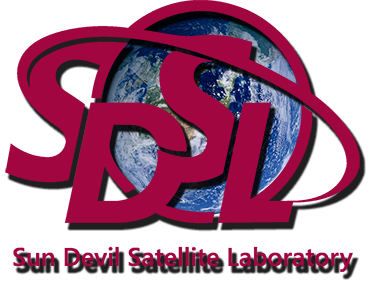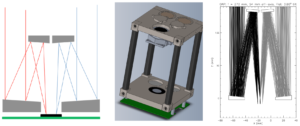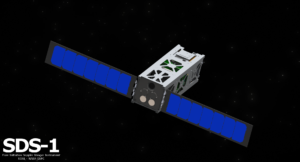
SDS-1

The Sun Devil Satellite 1 (SDS-1) was an all-student satellite mission to support a solar imaging instrument observing solar flare initiations. Serving as the genesis for the Sun Devil Satellite Laboratory, SDS-1 was a mission founded by its members. After researching mission capabilities, including utilizing a FLIR imaging core as an earth-pointed thermal imager, the SDS-1 team was paired with an imaging instrument: the Flare Initiation Doppler Imager (FIDI). The FIDI was an internal development effort at the NASA Goddard Space Flight Center (GSFC), lead by Dr. Adrian Daw, the development team comprised of Mr. Joe Davila, Mr. Patrick Haas, Mr. George Hilton, and Mr. Craig Stevens.  Although the SDS-1 never made it to flying hardware, the members of SDSL and the team at GSFC worked hand-in-hand from January of 2011 to develop a CDR-level design by October of that same year.
Although the SDS-1 never made it to flying hardware, the members of SDSL and the team at GSFC worked hand-in-hand from January of 2011 to develop a CDR-level design by October of that same year.
 Had it flown and operated, the Sun Devil Satellite 1 would have accomplished a great deal from a technical perspective. At the time of its inception, the SDS-1 would have had the highest data rate of all university spacecraft in orbit. Furthermore, the SDS-1 would have been one of the first university satellites to have truly active 3-axis control, yielding a pointing accuracy around the sun of +/- 0.1 deg. The SDS-1 would have provided one of the largest science data buffers of any university CubeSat. These developments are of course beside the science data that would have been collected by the FIDI instrument: at the time a first of its kind for CubeSats, the FIDI would have imaged the sun in two separate wavelengths, utilizing the first ultraviolet focal plane used on a nanosatellite.
Had it flown and operated, the Sun Devil Satellite 1 would have accomplished a great deal from a technical perspective. At the time of its inception, the SDS-1 would have had the highest data rate of all university spacecraft in orbit. Furthermore, the SDS-1 would have been one of the first university satellites to have truly active 3-axis control, yielding a pointing accuracy around the sun of +/- 0.1 deg. The SDS-1 would have provided one of the largest science data buffers of any university CubeSat. These developments are of course beside the science data that would have been collected by the FIDI instrument: at the time a first of its kind for CubeSats, the FIDI would have imaged the sun in two separate wavelengths, utilizing the first ultraviolet focal plane used on a nanosatellite.
Notwithstanding, the SDS-1 still supported a great deal of educational and technical development that supports SDSL to this day. Many of the mission’s members went on to work at several space-industry companies: Orbital ATK, EchoStar, and Honeywell just to name a few. More importantly, the mission was the nexus of SDSL; the mission’s team went on to support SDSL, even following the mission’s termination. Passed down from graduating class to graduating class, many of the engineering insights, innovations and methodologies obtained in the development of SDS-1 have stood the test of time, and are at least faintly visible in the Phoenix mission today.
